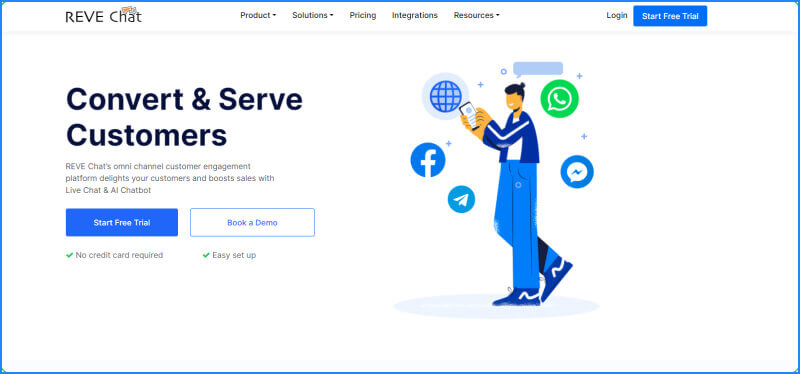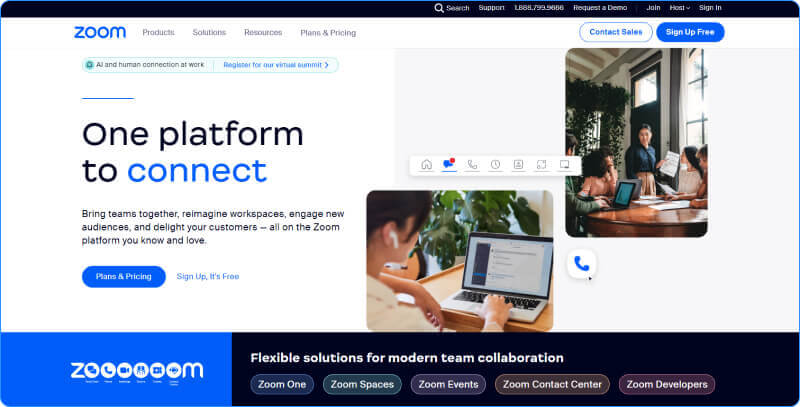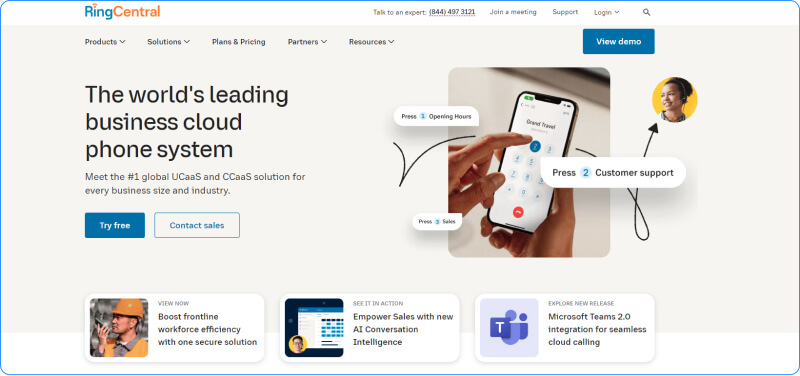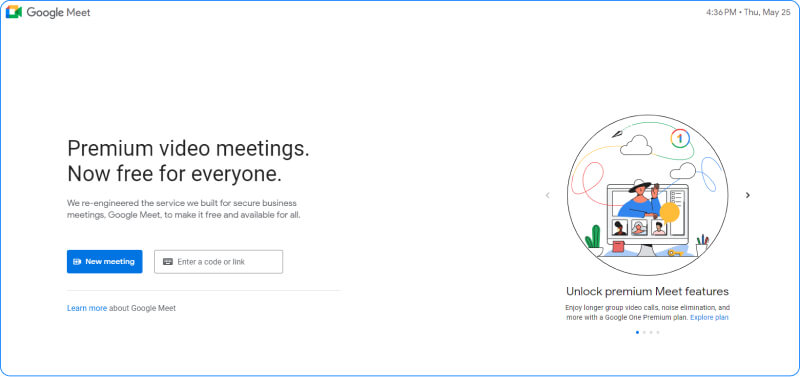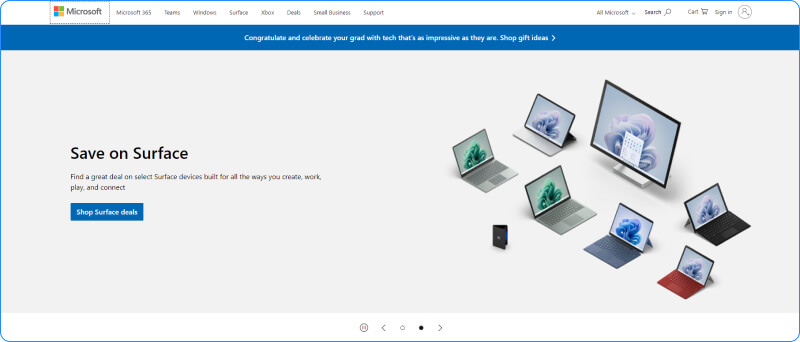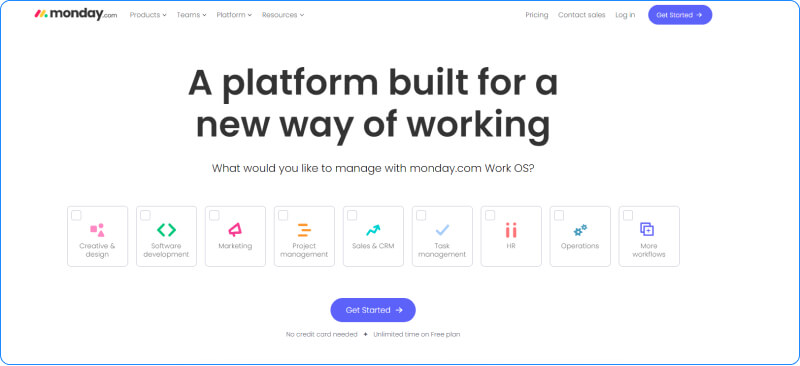Business Communication Solutions, Types & Benefits
- May 28, 2023
- 10 mins read
- Listen

Table of Content
Whether you’re a small startup or a multinational corporation, the ability to communicate clearly, concisely, and persuasively can make or break your success. As technology continues to advance and reshape the way we connect and collaborate, mastering the art of business communication is an essential skill for professionals in every industry.
The digital age has ushered in a new era of communication, where emails, video conferences, instant messaging, and social media platforms dominate our professional interactions. While these tools offer unprecedented convenience and efficiency, they also present unique challenges that demand adaptability and finesse.
In this article, we’ll explore the business communication solution to skyrocket your business setting.
What is Business Communication?
Business communication refers to the exchange of information, ideas, and messages within and between organizations and their stakeholders. It encompasses all forms of communication used in a business context, including verbal, written, and non-verbal channels.
It encompasses a wide range of activities, including:
- Internal Communication: It involves communication within an organization, such as between employees, departments, and management. It includes team meetings, emails, memos, intranets, and other channels that facilitate information sharing, goal alignment, and collaboration.
- External Communication: It refers to communication between the organization and external parties, such as customers, clients, suppliers, shareholders, and the general public. External communication aims to build and maintain relationships, convey the organization’s values and offerings, address customer inquiries, and manage the organization’s reputation.
- Business Writing: It is essential in the business world. It includes writing reports, proposals, emails, memos, business letters, and other documents conveying, persuading, and informing information.
- Presentation Skills: Business professionals often need to deliver presentations to convey ideas, pitch projects, or share information. Strong presentation skills involve structuring content, using visual aids effectively, and delivering a compelling message to engage and inform the audience.
- Non-verbal Communication: Non-verbal cues, such as body language, facial expressions, and tone of voice, also play a significant role in business communication. Being aware of and effectively utilizing non-verbal communication can enhance understanding, build rapport, and convey confidence and credibility.
Importance of Business Communication
Effective business communication is vital for the success of any organization. Here are some key reasons why business communication is important:
- Clear and Efficient Information Exchange: It ensures that information is shared accurately, clearly, and in a timely manner. It enables employees to understand their roles, responsibilities, and tasks, leading to improved productivity and efficiency. Clear communication also reduces the likelihood of misunderstandings, errors, and conflicts.
- Collaboration and Teamwork: Effective communication fosters collaboration and teamwork within an organization. When employees can communicate their ideas, concerns, and feedback openly, it encourages creativity, innovation, and problem-solving. It also promotes a sense of camaraderie and trust among team members, enabling them to work together towards shared goals.
- Building Strong Relationships: Business communication is essential for building strong relationships with stakeholders, including customers, clients, suppliers, and investors. Clear and responsive communication helps to establish trust, credibility, and loyalty. It allows organizations to understand the needs and expectations of their stakeholders and respond effectively to them, leading to enhanced customer satisfaction and long-term partnerships.
- Decision-making and Problem-solving: Effective communication plays a crucial role in decision-making processes. When relevant information is communicated clearly and comprehensively, it enables managers and decision-makers to make informed choices. Additionally, open communication channels facilitate problem-solving by encouraging the sharing of ideas, perspectives, and potential solutions.
- Employee Engagement and Morale: Good communication practices contribute to higher levels of employee engagement and morale. Employees who feel informed, involved, and valued through effective communication are more likely to be motivated, satisfied, and committed to their work. It also provides opportunities for recognition, feedback, and professional development, further boosting employee morale.
- Managing Change and Crisis: During times of change or crisis, effective communication becomes even more critical. Clear and transparent communication helps to alleviate uncertainty, address concerns, and guide employees through transitions. It enables organizations to manage change effectively, maintain employee trust, and navigate challenging situations while minimizing disruption.
Types of Business Communication
Business communication encompasses various types of communication channels and methods. Here are some common types of business communication:
- Verbal Communication: Verbal communication involves the use of spoken words and includes face-to-face conversations, meetings, presentations, and telephone conversations. It allows for immediate feedback and clarification and is particularly useful for conveying complex or sensitive information.
- Written Communication: Written communication involves the use of written words and encompasses a wide range of mediums, such as emails, memos, reports, business letters, newsletters, and documentation. It provides a permanent record, allows for carefully crafting messages, and enables effective communication across distances and time zones.
- Non-Verbal Communication: It involves the use of body language, facial expressions, gestures, and tone of voice to convey meaning. It plays a significant role in face-to-face interactions and can enhance or contradict the verbal message being conveyed. Paying attention to non-verbal cues is essential for effective communication and understanding.
- Digital Communication: With the rise of technology, digital communication has become increasingly prevalent in business settings. This includes emails, instant messaging, video conferences, collaborative platforms, and social media. It offers speed, convenience, and global connectivity, allowing for quick and efficient information exchange and collaboration.
- Formal Communication: Formal communication follows established hierarchical structures and predefined channels within an organization. It includes official announcements, policies, procedures, and reports. Formal communication ensures consistency, clarity, and adherence to organizational protocols.
- Informal Communication: Informal communication occurs outside the formal channels and hierarchies. It includes casual conversations, water cooler chats, social gatherings, and informal networks. It fosters relationship-building, sharing of ideas, and a sense of camaraderie within the organization.
- Visual Communication: It utilizes visuals, such as graphs, charts, diagrams, infographics, and presentations, to convey information. Visuals can simplify complex data, enhance understanding, and make information more engaging and memorable.
- Cross-Cultural Communication: Cross-cultural communication refers to communication between individuals from different cultural backgrounds. It requires sensitivity to cultural norms, customs, and communication styles to ensure effective understanding and avoid misunderstandings.
- Crisis Communication: It involves the dissemination of information during emergencies, crises, or sensitive situations. It focuses on managing communication, addressing concerns, and maintaining transparency to minimize negative impacts and restore trust.
- External Communication: It involves communication with stakeholders outside the organization, such as customers, clients, suppliers, shareholders, and the general public. It includes marketing and advertising messages, press releases, customer support, and public relations efforts.
9 Top Business Communication Solutions
A robust business communication solution improves customer interactions, enabling businesses to deliver exceptional service and support. By leveraging various communication channels, such as chatbots, email, social media, and phone, companies can engage with customers in a personalized and timely manner, addressing their needs and concerns promptly.
Let’s take a look at the best business communication tools that will skyrocket your business setting.
1. REVE Chat
It provides businesses with a chatbot, live chat, voice, video, and social media messaging capabilities. It helps in real-time customer engagement, improving customer support, and increasing sales conversion rates.
2. Zoom
It is a popular video conferencing platform that offers high-quality video and audio meetings. It supports large participant numbers, screen sharing, recording, and collaboration features. It’s known for its ease of use and reliability.
3. RingCentral
It offers a comprehensive suite of communication tools, including voice calls, video conferencing, team messaging, and contact center solutions. It provides seamless integration with existing systems and supports mobility and remote work.
4. Cisco WebEx
It is a feature-rich video conferencing and collaboration platform. It allows for virtual meetings, webinars, and screen sharing. It offers advanced security features and is scalable for small businesses to large enterprises.
5. Google Meet
It is Google’s video conferencing solution, integrated with other Google Workspace tools. It allows for video meetings, screen sharing, and real-time collaboration. Its key advantage is the seamless integration with other Google products.
6. Slack
It is a popular team communication and collaboration platform. It offers channels for organized discussions, direct messaging, file sharing, and integration with numerous third-party apps. It enhances team productivity and streamlines communication.
7. Microsoft Teams
Teams is a collaboration platform by Microsoft that combines chat, video meetings, file storage, and app integration. It integrates well with other Microsoft tools and provides a centralized hub for teamwork and communication.
8. GoToWebinar
GoToWebinar is a platform for hosting webinars and online events. It offers features like registration management, presentation tools, audience engagement features, and analytics. It’s widely used for marketing, training, and lead generation purposes.
9. Monday.com
Monday.com is a project management and team collaboration platform. While primarily focused on project management, it offers communication features like task assignment, real-time collaboration, and file sharing. It helps teams stay organized and communicate effectively.
Key Benefits of Business Communication
Effective business communication offers numerous benefits that contribute to the success and growth of an organization. Here are some key benefits of business communication:
- Enhanced Productivity: Clear and efficient communication streamlines workflows, reduces errors, and improves productivity. When employees have access to timely and accurate information, they can make informed decisions, collaborate effectively, and complete tasks more efficiently.
- Stronger Relationships: It fosters stronger relationships within and outside the organization. It helps build trust, respect, and understanding among team members, leading to better collaboration, teamwork, and positive work culture. Additionally, effective external communication builds strong relationships with customers, clients, and other stakeholders, enhancing loyalty and partnerships.
- Increased Employee Engagement: It promotes employee engagement and satisfaction. When employees feel well-informed, involved in decision-making, and have the opportunity to provide feedback, they are more likely to be motivated, committed, and loyal to the organization. Engaged employees contribute to higher levels of productivity and innovation.
- Improved Decision-making: Effective communication ensures that the right information reaches the right people at the right time. It enables managers and decision-makers to gather relevant insights, perspectives, and data, leading to more informed and effective decision-making. Good communication also facilitates the sharing of ideas and feedback, encouraging innovation and problem-solving.
- Better Conflict Resolution: Open and effective communication helps prevent conflicts and, when they arise, facilitates their resolution. When individuals can express their concerns, grievances, and differing viewpoints in a constructive manner, conflicts can be addressed promptly and resolved through dialogue and negotiation. This leads to a more harmonious and productive work environment.
- Enhanced Customer Satisfaction: Effective communication with customers is crucial for building and maintaining strong relationships. It ensures that customer inquiries, concerns, and feedback are addressed in a timely and satisfactory manner. This fosters customer satisfaction, loyalty, and positive word-of-mouth, contributing to the organization’s success.
- Efficient Change Management: During times of change, effective communication is essential for managing transitions successfully. Transparent communication helps employees understand the reasons for change, its impact, and their role in the process. It reduces resistance, fosters acceptance, and facilitates a smoother transition, minimizing disruption and maintaining employee morale.
Summary
In summary, embracing a business communication solution equips organizations with the necessary tools to adapt and thrive in the ever-evolving business world. It fosters collaboration, empowers employees, enhances customer interactions, and ultimately contributes to the overall growth and prosperity of the organization.
With the right business communication solution, businesses can overcome challenges, seize opportunities, and build a solid foundation for future success.


